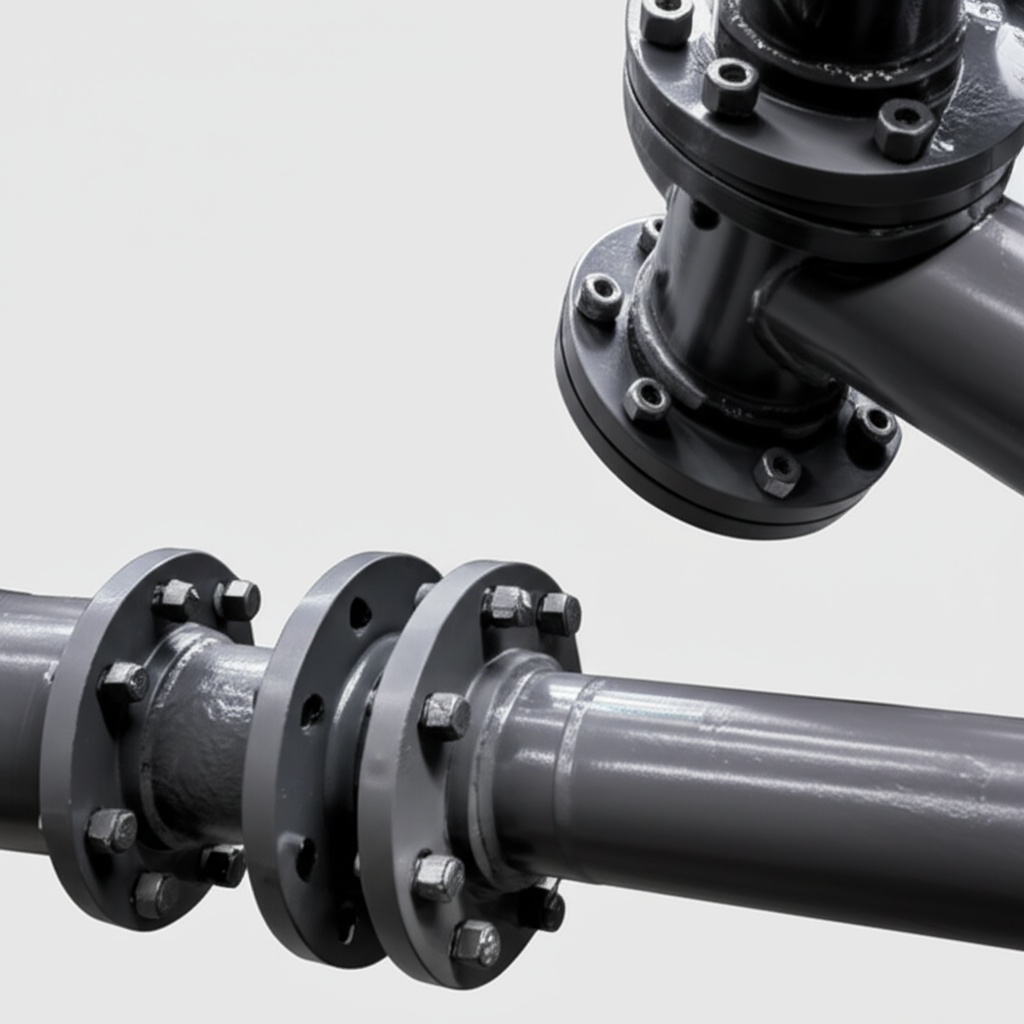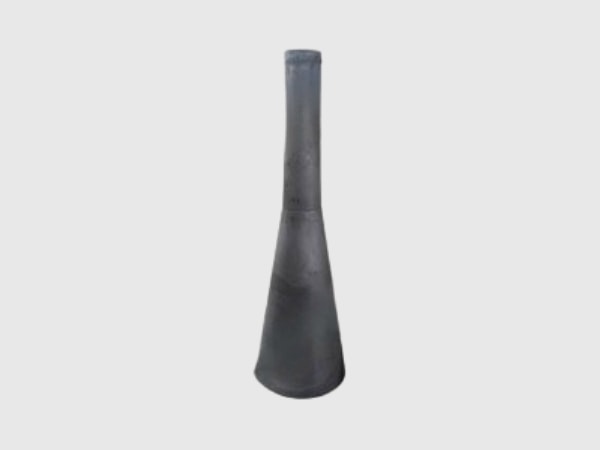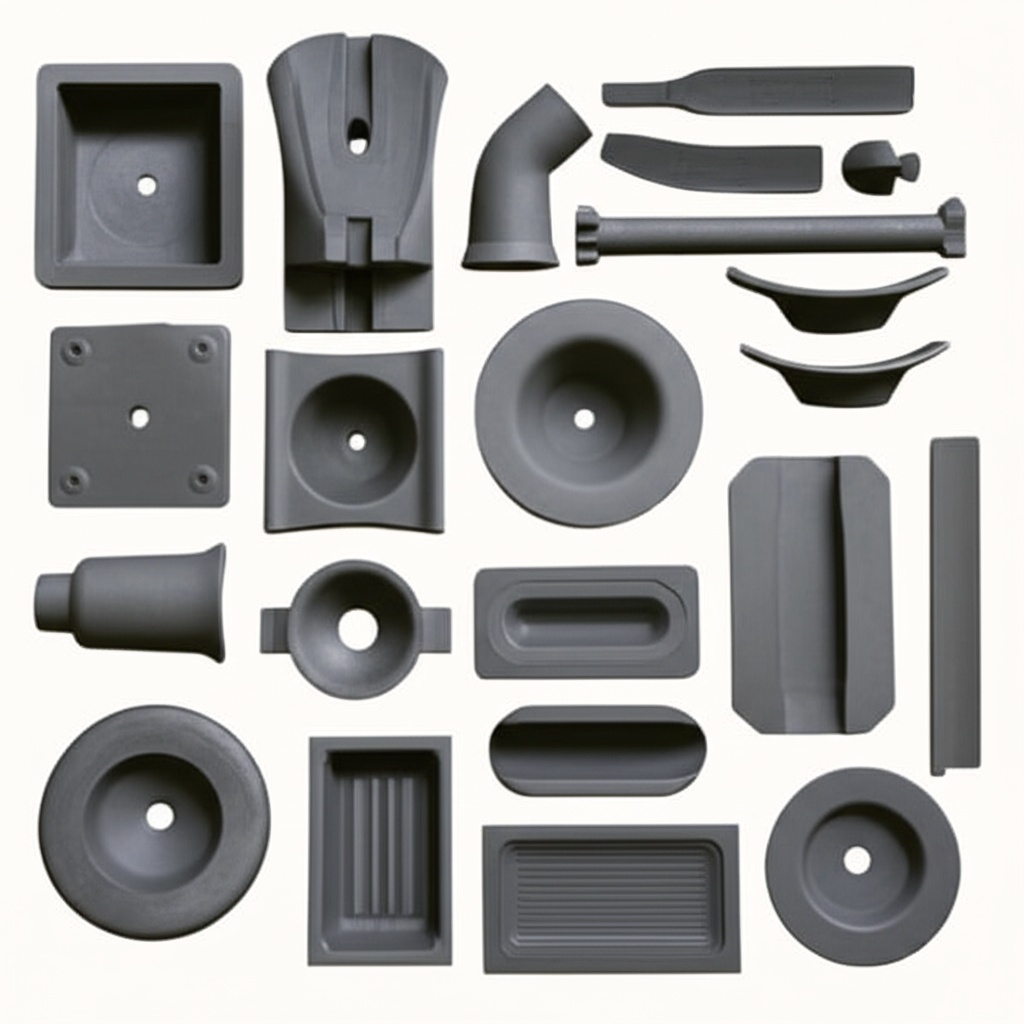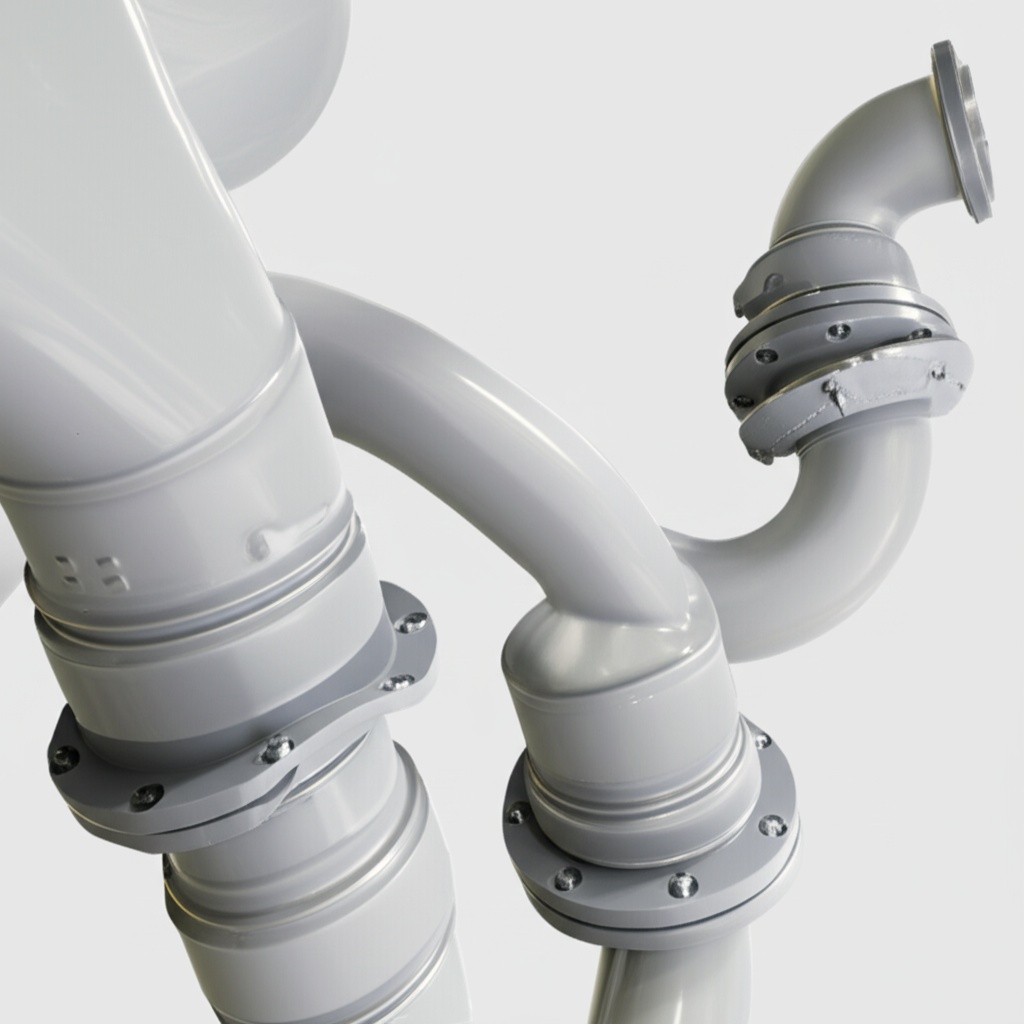Discover Diverse Russian SiC Products

Share
Discover Diverse Russian SiC Products
In the relentless pursuit of performance and durability across demanding industrial landscapes, custom silicon carbide (SiC) products have emerged as indispensable solutions. From the microscopic intricacies of semiconductor manufacturing to the extreme environments of aerospace and nuclear energy, SiC offers a unique blend of properties that traditional materials simply cannot match. This blog post delves into the world of custom SiC products, focusing on their applications, benefits, and the critical considerations for procurement managers, engineers, and technical buyers seeking cutting-edge solutions in industries such as semiconductors, high-temperature processing, aerospace, energy, and industrial manufacturing. We’ll also shed light on the burgeoning landscape of SiC manufacturing, particularly highlighting the significant contributions from a global perspective, including the noteworthy developments in China.
Main Applications of Custom SiC Components
The unparalleled properties of silicon carbide, including its exceptional hardness, thermal conductivity, high-temperature strength, and chemical inertness, make it a material of choice across a vast spectrum of high-performance applications. Custom SiC components are tailored to meet the exact specifications of each unique requirement, ensuring optimal performance and longevity.
- Semiconductor Manufacturing: SiC is crucial for wafer processing equipment, electrostatic chucks, and susceptors due to its thermal stability and purity, enabling precise and contamination-free environments for advanced chip production.
- Automotive Industry: With the rise of electric vehicles (EVs), SiC power electronics are revolutionizing inverters, on-board chargers, and DC-DC converters, offering higher efficiency, smaller footprints, and improved thermal management for enhanced vehicle performance and range.
- Aerospace & Defense: Its lightweight, high-strength, and thermal shock resistance make SiC ideal for missile nose cones, jet engine components, and mirror substrates for space telescopes, where extreme conditions demand robust materials.
- Power Electronics: SiC devices are displacing silicon in high-voltage, high-frequency applications like power supplies, motor drives, and grid infrastructure, leading to reduced energy losses and more compact designs.
- Renewable Energy: In solar inverters and wind turbine converters, SiC enhances efficiency and reliability, crucial for maximizing energy harvesting from renewable sources.
- Metallurgy & High-Temperature Processing: SiC crucibles, furnace linings, and kiln furniture withstand extreme temperatures and corrosive atmospheres, extending equipment lifespan and improving process efficiency.
- Chemical Processing: Its excellent corrosion resistance makes SiC suitable for pump seals, valve components, and heat exchangers in harsh chemical environments.
- LED Manufacturing: SiC substrates are used for growing GaN (gallium nitride) epitaxial layers, essential for high-brightness LEDs, contributing to more efficient and durable lighting solutions.
- Industrial Machinery: SiC wear parts, nozzles, and bearings provide superior abrasion resistance, reducing downtime and maintenance costs in heavy industrial equipment.
- Telecommunications: SiC components are finding applications in high-frequency amplifiers and filters due to their stable electrical properties at elevated temperatures.
- Oil and Gas: SiC offers wear and corrosion resistance for downhole tools and pump components in abrasive and corrosive drilling environments.
- Medical Devices: Biocompatibility and wear resistance make SiC suitable for some surgical tools and prosthetics.
- Rail Transportation: SiC power modules contribute to more efficient traction systems in trains.
- Nuclear Energy: Its radiation resistance and high-temperature stability are being explored for advanced nuclear reactor components.
Why Choose Custom Silicon Carbide?
While standard materials offer a baseline, custom silicon carbide products provide a tailored approach to engineering challenges. The benefits of customization are profound, translating directly into superior performance and economic advantages:
- Tailored Performance: Exact specifications for hardness, porosity, thermal conductivity, and electrical properties can be achieved to meet unique application requirements.
- Optimized Design: Components can be designed to precise geometries, integrating features that would be impossible or inefficient with off-the-shelf parts.
- Enhanced Durability: Customization allows for specific material compositions and processing techniques to maximize wear resistance, corrosion resistance, and thermal shock resistance for the intended environment.
- Cost Efficiency in the Long Run: While initial tooling costs might be higher, the extended lifespan, reduced downtime, and improved performance of custom SiC components often lead to significant long-term savings.
- Innovation Enablement: Custom SiC facilitates the development of next-generation technologies by providing materials that push the boundaries of conventional engineering.
Recommended SiC Grades and Compositions
Silicon carbide exists in various forms, each offering distinct properties suited for specific applications. Understanding these grades is crucial for selecting the optimal material for your custom SiC product.
| SiC Grade/Type | Key Characteristics | Typical Applications |
|---|---|---|
| Reaction-Bonded SiC (RBSiC) | Excellent thermal shock resistance, high strength, good oxidation resistance, low porosity. Often contains free silicon. | Kiln furniture, wear parts, nozzles, heat exchangers, mechanical seals. |
| Sintered SiC (SSiC) | High purity, excellent corrosion and oxidation resistance, superior hardness, very high strength at elevated temperatures. Fine grain structure. | Mechanical seals, pump components, high-temperature furnace components, body armor, semiconductor processing equipment. |
| Nitride-Bonded SiC (NBSiC) | Good thermal shock resistance, excellent strength, good wear resistance. Suitable for large and complex shapes. | Refractory applications, kiln furniture, blast furnace components. |
| Chemical Vapor Deposition SiC (CVD SiC) | Extremely high purity, theoretical density, isotropic properties, excellent surface finish. | Mirror substrates, semiconductor processing tools (e.g., susceptors), extreme environment components. |
| Recrystallized SiC (ReSiC) | Porous, good thermal shock resistance, high thermal conductivity. | Kiln furniture, high-temperature insulation. |
Design Considerations for SiC Products
Designing with silicon carbide requires a specialized approach due to its unique properties, particularly its hardness and brittleness. Careful consideration during the design phase can significantly impact manufacturability, performance, and cost.
- Geometry Limits: Avoid sharp internal corners, thin walls, and abrupt changes in cross-section to minimize stress concentrations and reduce the risk of cracking during processing or in application.
- Wall Thickness: Uniform wall thickness is preferred to ensure consistent thermal expansion and contraction, which is critical during high-temperature processing.
- Taper and Draft Angles: Incorporate appropriate taper and draft angles for easier demolding, especially for complex shapes.
- Holes and Features: Design holes and features to be as large as possible and away from edges to prevent fracturing. Consider through-holes over blind holes where feasible.
- Surface Area: Larger surface areas can be more prone to warpage during sintering. Design for adequate support during processing.
- Material Grade Selection: Match the SiC grade to the specific application requirements for optimal performance and cost-effectiveness.
Tolerance, Surface Finish & Dimensional Accuracy
Achieving precise tolerances and specific surface finishes in silicon carbide components is a testament to advanced manufacturing capabilities. While SiC is extremely hard, requiring diamond tooling for machining, modern techniques allow for remarkable dimensional accuracy.
- Achievable Tolerances: Standard tolerances for SiC can range from $pm0.5%$ to $pm0.1%$ or even tighter for critical dimensions, depending on the size and complexity of the part, and the manufacturing process (e.g., grinding, lapping).
- Surface Finish Options: Surface finishes can vary from as-fired (rough) to highly polished (mirror-like) depending on the application. Roughness values ($R_a$) can range from several micrometers down to sub-micrometer levels. Lapping and polishing are common post-processing steps to achieve very smooth surfaces, crucial for sealing applications or components requiring low friction.
- Precision Capabilities: With advanced grinding and polishing techniques, manufacturers can achieve very high levels of precision, making SiC suitable for optical components, precision bearings, and intricate semiconductor parts.
Post-Processing Needs for SiC Components
After initial shaping and firing, SiC components often require further processing to meet final specifications for performance and durability.
- Grinding: Diamond grinding is the primary method for achieving tight tolerances, precise geometries, and good surface finishes.
- Lapping & Polishing: For critical sealing surfaces, bearing surfaces, or optical applications, lapping and polishing provide ultra-smooth finishes and extreme flatness.
- Sealing/Impregnation: For porous SiC grades, impregnation with resins or metals can improve impermeability, strength, and corrosion resistance.
- Coating: In some cases, a protective or functional coating (e.g., a CVD SiC layer for purity or erosion resistance) may be applied.
- Bonding: SiC components can be bonded to other materials or to themselves using high-temperature brazing or diffusion bonding techniques.
Common Challenges and How to Overcome Them
Despite its superior properties, working with silicon carbide presents certain challenges. Experienced manufacturers have developed strategies to mitigate these issues.
- Brittleness: SiC is inherently brittle, making it susceptible to chipping or cracking under impact or stress concentrations.
- Mitigation: Careful design (avoiding sharp corners, abrupt thickness changes), proper handling, and ensuring adequate support during processing and use.
- Machining Complexity: Its extreme hardness makes machining SiC very difficult and costly, requiring specialized diamond tools and slow processing speeds.
- Mitigation: Near-net-shape manufacturing techniques (e.g., pressing, slip casting, injection molding) to minimize post-sintering machining; optimizing machining parameters; utilizing advanced CNC grinding.
- Thermal Shock (though generally good, can still be an issue in extreme cases): While SiC has excellent thermal shock resistance, extreme and rapid temperature changes can still pose a risk.
- Mitigation: Careful design of thermal gradients, pre-heating/cooling cycles, and selection of SiC grades with superior thermal shock properties (e.g., RBSiC).
- Cost: The raw materials and manufacturing processes for SiC are generally more expensive than those for traditional ceramics or metals.
- Mitigation: Focus on the long-term value proposition (extended lifespan, reduced downtime, improved performance) rather than initial cost; optimize design to reduce material usage and machining time.
How to Choose the Right SiC Supplier
Selecting a reliable and capable custom silicon carbide supplier is paramount to the success of your project. Here’s what to look for:
- Technical Expertise: A deep understanding of SiC material science, processing techniques, and application engineering.
- Material Options: A diverse range of SiC grades (RBSiC, SSiC, CVD SiC, etc.) to match your specific requirements.
- Manufacturing Capabilities: State-of-the-art equipment for shaping, sintering, grinding, lapping, and other post-processing steps, including precision CNC machining.
- Quality Control: Robust quality management systems, certifications (e.g., ISO 9001), and rigorous inspection protocols.
- Design Support: Ability to provide DFM (Design for Manufacturability) input and collaborate on optimizing your component design.
- Experience & Track Record: Proven success in supplying custom SiC components to industries similar to yours. Review their case studies and testimonials.
- Scalability: Capacity to handle both prototype runs and large-volume production.
- Customization Support: A dedicated team for custom inquiries and the ability to tailor solutions precisely to your needs. For unparalleled support in customizing your silicon carbide products, consider their customizing support services.
Speaking of reliable suppliers, it’s worth highlighting a major hub of silicon carbide customizable parts manufacturing: Weifang City in China. This region is home to over 40 silicon carbide production enterprises, collectively accounting for more than 80% of China’s total SiC output. Among them, Sicarb Tech stands out. Since 2015, Sicarb Tech has been instrumental in introducing and implementing advanced silicon carbide production technology, assisting local enterprises in achieving large-scale production and significant technological advancements. They have been a direct witness to the emergence and ongoing development of the local silicon carbide industry, positioning themselves as a trusted and experienced partner.
Sicarb Tech, belonging to Chinese Academy of Sciences (Weifang) Innovation Park, is an entrepreneurial park that collaborates closely with the National Technology Transfer Center of the Chinese Academy of Sciences. As a national-level innovation and entrepreneurship service platform, they integrate innovation, entrepreneurship, technology transfer, venture capital, incubation, acceleration, and scientific and technological services. Capitalizing on the robust scientific, technological capabilities and talent pool of the Chinese Academy of Sciences, and backed by the Chinese Academy of Sciences National Technology Transfer Center, Sicarb Tech acts as a bridge, facilitating the integration and collaboration of crucial elements in the transfer and commercialization of scientific and technological achievements. They have established a comprehensive service ecosystem spanning the entire spectrum of technology transfer and transformation. This commitment to scientific rigor and innovation ensures more reliable quality and supply assurance within China.
Sicarb Tech boasts a domestic top-tier professional team specializing in customized production of silicon carbide products. Under their support, over 494 local enterprises have benefited from their technologies. They possess a wide array of technologies covering material science, process engineering, design, measurement, and evaluation, along with integrated processes from raw materials to finished products. This extensive technological breadth enables them to meet diverse customization needs, offering higher-quality, cost-competitive customized silicon carbide components in China.
Furthermore, for those looking to establish their own professional silicon carbide products manufacturing plant, Sicarb Tech offers a unique “turnkey project” service. This includes technology transfer for professional silicon carbide production, factory design, procurement of specialized equipment, installation and commissioning, and trial production. This comprehensive support allows clients to own a professional silicon carbide products manufacturing plant with an effective investment, reliable technology transformation, and a guaranteed input-output ratio.
Cost Drivers and Lead Time Considerations
Understanding the factors that influence the cost and lead time of custom SiC products is essential for effective procurement and project planning.
| Cost Driver | Impact |
|---|---|
| Material Grade & Purity | Higher purity and specialized SiC grades (e.g., CVD SiC) are significantly more expensive than standard grades. |
| Component Complexity | Intricate geometries, thin walls, tight tolerances, and numerous features require more complex tooling and extensive machining, increasing cost. |
| Size & Weight | Larger components require more raw material and longer processing times, contributing to higher costs. |
| Surface Finish Requirements | Lapping and polishing for ultra-smooth surfaces or very tight flatness add significant cost due to specialized equipment and labor. |
| Volume | Higher production volumes typically lead to lower per-unit costs due to economies of scale in tooling and processing. |
| Tooling & NRE (Non-Recurring Engineering) | For custom parts, initial tooling costs and engineering design time can be substantial, especially for complex geometries. |
| Testing & Certification | Specific testing requirements (e.g., NDT, mechanical property validation) and industry certifications can add to the overall cost. |
Lead Time Considerations: Lead times for custom SiC products can vary widely, typically ranging from 8 to 20 weeks or more, depending on:
- Design Complexity: More complex designs require longer engineering and tooling phases.
- Material Availability: Availability of specific SiC raw materials.
- Production Queue: The supplier’s current production schedule and backlog.
- Post-Processing: Extensive grinding, lapping, or coating adds to the overall lead time.
- Volume: Large orders will naturally take longer to produce.
For specific inquiries about lead times or to initiate a project, it’s always best to contact the supplier directly.
Frequently Asked Questions (FAQ)
- What is the primary advantage of custom silicon carbide over other advanced ceramics?
The primary advantage lies in its superior combination of properties, including exceptionally high hardness, excellent thermal conductivity, remarkable high-temperature strength, and outstanding chemical inertness, especially compared to other technical ceramics like alumina or zirconia, making it ideal for extreme operating environments. - Can silicon carbide components be repaired if damaged?
Generally, repairing silicon carbide components is challenging due to its extreme hardness and brittleness. Minor chips or cracks might sometimes be addressed through specialized grinding, but significant damage typically necessitates replacement to maintain performance and integrity. - Is silicon carbide electrically conductive or insulating?
The electrical properties of silicon carbide can vary. While pure SiC is a semiconductor, its conductivity can be tailored through doping during manufacturing. Certain grades can be formulated to be electrical insulators, while others are conductive semiconductors, critical for power electronics applications.
Conclusion
Custom silicon carbide products represent the pinnacle of advanced material engineering, offering unparalleled performance in the most demanding industrial environments. For engineers, procurement managers, and technical buyers in critical sectors like semiconductors, aerospace, power electronics, and high-temperature processing, investing in tailored SiC components is not just a choice—it’s a strategic imperative for achieving superior operational efficiency, extended component lifespan, and breakthrough innovation. By understanding the diverse grades, design considerations, and the critical factors in choosing a capable supplier, businesses can unlock the full potential of this extraordinary material. With comprehensive support for custom silicon carbide products and even technology transfer for establishing your own manufacturing capabilities, partners like Sicarb Tech offer robust solutions to meet the evolving needs of global industries.

About the Author: Sicarb Tech
We provide clear and reliable insights into silicon carbide materials, component manufacturing, application technologies, and global market trends. Our content reflects industry expertise, practical experience, and a commitment to helping readers understand the evolving SiC landscape.




